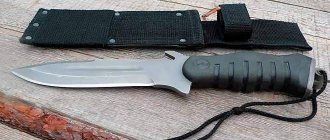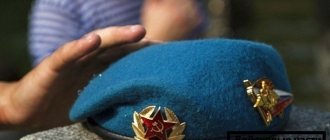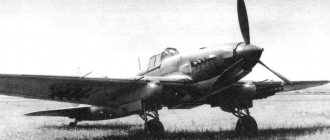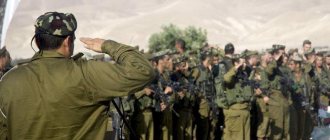History of creation
The Russian Marine Corps dates back more than three centuries. The date of formation of this type of troops is considered to be November 27, 1705. The date falls during the period of the Northern War with Sweden - of course, this is not an accident, since it was then that the army needed specially trained units of fighters who initially fired at enemy ships from afar, and when approaching, had to board the ship. This type of battle required courageous and courageous fighters, strong physically and mentally and possessing the proper dexterity.
Despite the fact that in the course of its history the Marine Corps was subject to disbandment and was rebuilt, the listed qualities are still relevant to this day - it is quite difficult to become a Marine, therefore such troops rightfully bear the title of elite. The title of Marine itself is a source of pride, and receiving a black beret or the Marine Corps Service Medal is a great honor that is truly worth a lot.
These distinctive signs are characteristic only of particularly distinguished fighters. However, the statistics of awards not only with departmental medals are impressive: over the period of the existence of the branch of service, Marines became Heroes of the Soviet Union 113 times, and 22 soldiers were awarded the title of Hero of the Russian Federation.
Interesting Facts
In Internet forums, some users claim that the black beret is a general military attribute (a misconception that arose in the wake of the adoption of amendments to the law on military uniforms of 2011). However, if you decide to wear it without being a Marine, tanker or riot policeman, you will be asked to do so. It is better not to take risks and adhere to the norms of the official and widely known color division .
Not only Russian marines wear this headdress. For example, it is part of the uniform of the Swiss Guards. At the same time, in most European countries, Marine Corps personnel wear dark blue hats (Holland) or green (Great Britain, Finland). But the American Marines abandoned both the blue and green versions, as they considered the beret too feminine an accessory .
Purpose
Of course, over time, technology, weapons and warships are improved. Along with this process, the priority task of the Russian Marine Corps units is changing. Much depends on the purpose of a particular unit, for example, airborne battalion or marine reconnaissance, so fighters find themselves on enemy territory in various ways:
- landing on the shore from ships and boats;
- landing behind enemy lines from naval air vehicles;
- crossing water obstacles on floating vehicles (usually an armored personnel carrier) with subsequent landing off the shore.
The departments also face different tasks:
- diverting attention to oneself for the purpose of safe approach of the main offensive forces;
- capture of enemy-occupied territory, such as a coast or island, followed by defense;
- assault on high-rise buildings and base fortifications in which enemy troops are located;
- carrying out sabotage on enemy territory with fire support from aviation and navy.
What color does it take from the engineering troops?
According to the order of the USSR NGOs, wear dark blue berets
, as part of the summer uniform, was reserved for female military personnel and students of military academies.
Interesting materials:
How to set up hotkeys in Total Commander? How to set up Windows hotkeys? How to adjust volume in zoom? How to set up Google Home? How to configure Google Chrome so that it does not close when closing a tab? How to set up Google Chrome to open in a new tab? How to set up Google Chrome? How to configure processor cores? How to adjust the brightness and contrast of the monitor? How to adjust brightness and contrast?
Armament
In terms of equipment with weapons and their modifications, Marine Corps units can be compared with motorized rifle troops; on many points there will be similarities. The main type of small arms is the Kalashnikov assault rifle of the AKS-74M modification. Each department has one copy of the RPG-7, RPK and SVD. In addition, in any company there is a platoon of rocket and grenade launchers, in their hands are AGS-17 modifications of the “Flame”, as well as PKM.
The Marines are armed with both the Makarov pistol and the APS; officers, drivers, as well as some highly specialized specialists are equipped with such devices. Also, units can be equipped with RPG-18 (Mukha) and RPO-2 (Bumblebee), depending on the task. Among the mobile vehicles at the disposal of the Marine Corps units are the BTR-82A, BTR-80, as well as the special Zubr hovercraft (available in service in the Baltic Fleet).
The history of black berets
Marine Corps dress uniform
The history of the appearance of black berets is associated with the organization of Marine Corps detachments. These were introduced by Peter the Great during the Northern War. The units underwent special training, their tasks included:
firing rifles at enemy crews; boarding and seizure of ships; support of ground units; capturing enemy ports and naval bases; defense against landing groups.
Marine formations showed themselves already in the Battle of Gangut in 1714. Later they served on a permanent basis in the fleet of the Russian Empire.
Accessory Features
A beret is a soft headdress that does not have a visor. In the Middle Ages, it was worn not only by ordinary people, but also by monarchs. By the 20th century, headdresses began to be widely used as an element of military uniforms in many countries around the world. In Russia, it is worn not only by marines, but also by representatives of other units, as well as patriotic organizations. These hats differ in color:
- blue ones wear airborne forces;
- blue - Air Force;
- cornflower blue - FSO and FSB special forces;
- gray - Russian Guard;
- green - Border troops, FSSP special forces;
- olive - Russian Guard and special forces of the Main Directorate of the Ministry of Defense;
- orange - Ministry of Emergency Situations;
- maroon - special forces of the Ministry of Internal Affairs;
- red - military police.
Airborne Forces
Special forces FSO and FSB
Russian National Guard
Russian Guard and special forces of the Main Directorate of the Ministry of Defense
Ministry of Emergency Situations
Special forces of the Ministry of Internal Affairs
Military police
FSSP special forces
Border troops
The marine beret for officers was made of wool, and for conscript sailors and sergeants - from brushed cotton fabric. Its side was trimmed with leatherette; initially, a small red flag with a golden anchor was attached to the left side. On the front of the black beret was a scarlet star for sailors and sergeants, and for officers - the emblem of the navy.
It is interesting that after the parade, which was dedicated to the next anniversary of the October Revolution, it was decided to move the red flag from the left side to the other side of the beret. This was done so that the country's leaders and honored guests, who stood on the podium to the right of the military personnel, would pay attention to him. Changes were made to the charter.
Active military personnel who wore the Marine beret noted its obvious advantages. The leatherette rim helped to hold the headgear securely even in extreme situations. The woolen fabric from which berets for officers were made was guaranteed to prevent hypothermia.
Takes Marine for Officers
For sailors
What other berets are there in the Russian army?
The colors of berets in the Russian army are distributed as follows:
blue - airborne troops (VDV), special forces of the Main Intelligence Directorate (GRU) can wear the uniform of different military units, but usually also wear blue berets; black - marines and combat units of coastal troops, riot police, special forces, tank units; maroon - worn as an insignia of special forces units of internal troops, issued only after passing exams; green - intelligence units, the right to wear is determined by exams or special merits; light green - part of the dress uniform of the border troops; who wears an olive beret - special forces formations (SPN), internal troops of the Ministry of Internal Affairs and the 12th Main Directorate of the Ministry of Defense (GU MO), the right to wear an olive headdress is also given after passing the exam; orange - part of the dress uniform of the Ministry of Emergency Situations; gray - special forces units of the Ministry of Internal Affairs; cornflower blue - Special Forces of the FSB, FSO and the Presidential Regiment; crimson color - in 1967-68. was an attribute of the USSR Airborne Forces, then replaced by a blue beret.
Taking into account this division, berets of the Russian army and in the world are often divided into elite, indicating the training of a fighter, and general, issued as part of the uniform. However, in both cases, this headdress is an integral part of the uniform, reflecting membership in the corresponding unit.
Source
How to wear a beret in the army?
The fabric should be damp, but water should not be dripping from it. Shape the beret. Put on the beret, placing the badge over your left eye, and pull the fabric towards the right side, smoothing it with your hand. Repeat these steps several times, trying to make sure that the surface on top is perfectly flat.
Interesting materials:
What happens to a person when he gets angry? What happens to a person when he is struck by lightning? What happens to a person under a train? What happens to a person after smoking a cigarette? What happens to a person during painful shock? What happens to a person when he completely abstains from alcohol? What happens to a person when foreign bodies enter the upper respiratory tract? What happens to a person during a shock wave? What happens to a person in a vacuum? What happens in the brain when a person learns?










